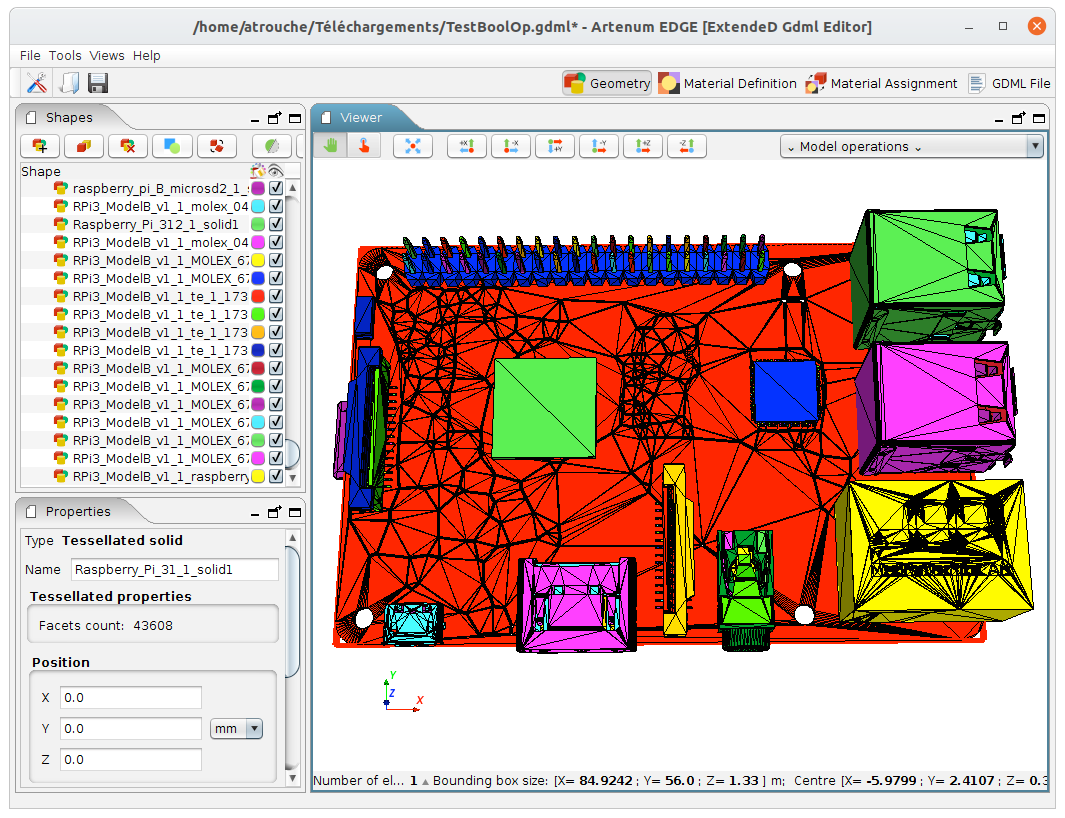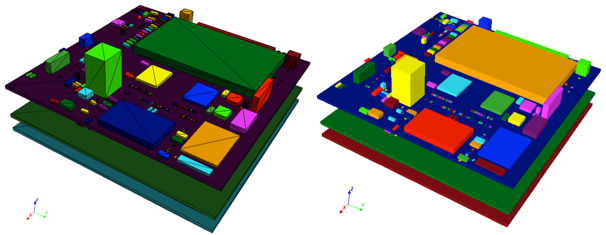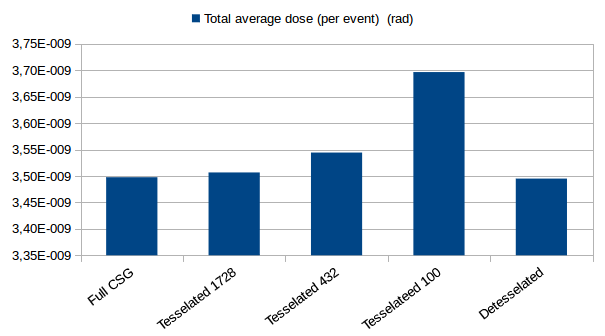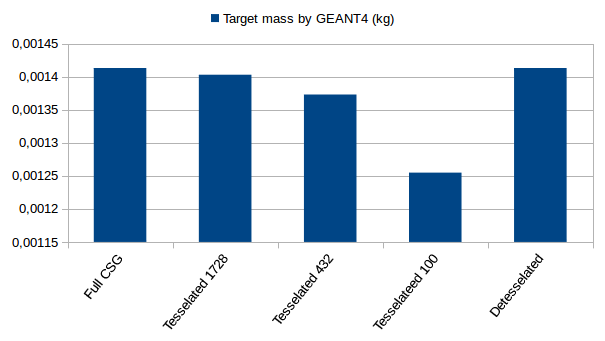DeCADe, for Detesselator and CAD extended importer, is an EDGE-plug-in providing extended STEP-AP format capabilities and a set of geometry simplification and clean-up features to adapt the imported geometry to radiations analysis.
Rich STEP-AP importer
The extended STEP-AP importer allows to:
- Import STEP element by element (i.e. shell by shell);
- Identify and exclude elements with a size lower than a given size or irrelevant for the targeted study;
- Import complex B-Rep shapes are imported through tessellated (i.e. triangulated) shapes.

This allows importing complex systems issued from most of usual industrial CAD tools and adapt them for radiations analysis
De-tessellation to recover a CSG based description from tessellated surfaces:
One key innovation of the DeCADE plug-in is the de-tessellation function, which allows recovering canonical shapes for a CSG based model from tessellated shapes. Such triangulated surfaces may primary come from B-rep geometry, for instance, as well simple meshes.
This new function is highly useful to simplify and optimise the imported geometry model but also to allow the possibility to build-up a clean CSG based from an input surface mesh. This equivalent CSG CAD model can then be edited by the user to adapt or extend it to his specific needs.
In most of the usual cases, canonical shapes can be automatically detected, sized and located or, for the most complex case, can manually be pre-identified by the user through the GUI and automatically sized, located and oriented automatically by the application.

The de-tessellation may deeply positively impact both CPU time and accuracy of results in Geant4 based analysis. In most of the case, the de-tessellation allows to recover the performances of a pure CSG/GDML description



